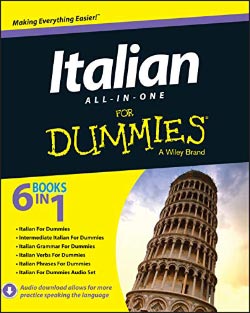What are the Italian partitive articles? English has two, although they are not really considered “articles”: some and a few.
Del latte
Some milk
Degli alberi
Some trees

How and when do you use the partitive articles in Italian? In this lesson, you will find the answer to all these questions.
Let’s start with the explanation right away!
How to use the partitive articles in Italian
Italian partitive articles are used to talk about an undefined amount of something, just like the English some, and you can find them in both the singular and in the plural. This is why they are called partitive: they refer to only a part of something.
All partitive articles in Italian must be placed before the noun.
Ho comprato delle arance.
I bought some oranges.
Vuoi dello zucchero?
Would you like some sugar?

Italian partitive articles are formed by combining the preposition di + a definite article. The article is the same one you would normally use for the noun. Literally, this translates to “of the”.
Before we dive into each type of article, let’s take a look at a table of all the possible Italian partitive articles.
| Di | del | dello | della | dei | degli | delle |
| + | il | lo | la | i | gli | le |
You will use del, dello and della for singular nouns.
You will use dei, degli and delle for plural nouns.
Zucchero is a masculine noun, and since it starts with -z, we know that its definite article is lo. Take a look at the table above and you will see that di + lo forms the partitive article dello.
Remember, Italian partitive articles are used to introduce an indefinite amount of something, which can be an object or a group of people.
Let’s see some other examples!
Title: Italian All-in-One For Dummies
Language: English / Italian
Publisher: For Dummies
Pages: 672
Learn to speak Italian like a native? Easy.
Italian All-in-One For Dummies appeals to those readers looking for a comprehensive, all-encompassing guide to mastering the Italian language. It contains content from all For Dummies Italian language instruction titles, including Italian For Dummies, Intermediate Italian For Dummies, Italian Verbs For Dummies, Italian Phrases For Dummies, Italian Grammar For Dummies, and Italian For Dummies Audio Set.
Examples of the use of partitive articles
Dei leoni stavano riposando sull’erba.
Some lions were resting on the grass.
Ho visto dei ragazzi che gettavano sassi nel fiume.
I saw some boys throwing stones into the river.
Mi servono delle matite nuove.
I need some new pencils.

If the noun is countable and in the plural, you can of course replace the article with alcuni or alcune, depending on the gender. Alcuni is an adjective that means a few.
Mi servono alcune matite nuove.
I need some new pencils.
You can’t use plural partitive articles with uncountable nouns.
Also, note how the partitive articles can also translate any in questions, because we’re still talking about a certain amount of something.
C’è del formaggio in frigo?
Is there any cheese in the fridge?
C’erano dei libri sulla scrivania?
Were there any books on the desk?
You can replace the partitive article with the expression un po’ di. You don’t need to add any articles after di.
Vorrei delle caramelle.
Vorrei un po’ di caramelle.
I would like some candy.
(Candies)
Vuoi dell’acqua?
Vuoi un po’ d’acqua?
Would you like some water?

Partitive articles + prepositions
To avoid awkward sentences, avoid using partitive articles when there’s another preposition in the sentence, as in…
Voglio andare al mare con degli amici.
I want to go to the beach with some friends.
Use alcuni instead.
Voglio andare al mare con alcuni amici.
I want to go to the beach with some friends.
And that’s the end of our guide to the Italian partitive articles! If you still have any doubts, feel free to leave a comment.
Now what?
Now that you’ve seen how the Italian partitive articles work, you might want to keep learning Italian online with these free Italian resources:
- Useful Italian Words Series
- Common Italian Phrases Series
- Italian grammar lessons and tricks
- Italian idiomatic expressions
Or you might also want an excellent offline Italian grammar resource to take with you at all times (Amazon).
❤️ If you liked this guide on the Italian partitive articles, consider sharing it with your social media friends who are also studying Italian.




